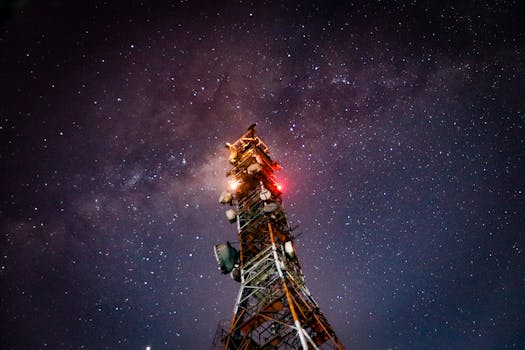
MEO Satellites: Revolutionizing Global Connectivity with Medium Earth Orbit Technology
MEO satellites, or Medium Earth Orbit satellites, are a type of satellite that operates in an orbit between 2,000 and 36,000 kilometers above the Earth’s surface. This orbit is higher than Low Earth Orbit (LEO) satellites but lower than Geostationary Orbit (GEO) satellites. MEO satellites are gaining popularity due to their unique advantages, which make them an attractive option for various applications, including global connectivity, navigation, and Earth observation.
The focus on MEO satellites has been increasing in recent years, driven by the growing demand for faster and more reliable satellite communications. Traditional GEO satellites have limitations, such as high latency and limited coverage, which can be overcome by MEO satellites. With their lower altitude and faster orbital period, MEO satellites can provide lower latency and higher throughput, making them ideal for real-time applications like video conferencing, online gaming, and cloud computing.
How MEO Satellites Work
MEO satellites work by transmitting and receiving signals to and from Earth stations or other satellites. They use a variety of frequencies, including Ka-band, Ku-band, and C-band, to provide different services like broadband internet, television broadcasting, and mobile communications. The satellites are equipped with transponders, which amplify and re-transmit the signals, allowing them to cover large areas of the Earth’s surface.
The orbit of MEO satellites is not geostationary, which means they do not remain stationary above a fixed point on the Earth’s surface. Instead, they move in a circular or elliptical orbit, which requires them to be tracked and controlled by ground stations to maintain their position and velocity. This complexity is managed by advanced propulsion systems and navigation software, ensuring the satellites remain operational and provide continuous services.
Advantages of MEO Satellites
MEO satellites offer several advantages over traditional GEO satellites. One of the primary benefits is lower latency, which is critical for real-time applications. The round-trip time for signals transmitted to and from MEO satellites is significantly shorter than for GEO satellites, resulting in faster and more responsive communications. Additionally, MEO satellites can provide higher throughput and better signal quality, making them suitable for demanding applications like high-definition video streaming and online gaming.
Another significant advantage of MEO satellites is their ability to provide global coverage with fewer satellites. Since they operate at a lower altitude, MEO satellites have a smaller footprint, which allows them to cover a larger area with fewer satellites. This reduces the overall cost of the satellite constellation and makes it more economical to deploy and maintain. Furthermore, MEO satellites can be designed to be more flexible and adaptable, enabling them to be reconfigured or repurposed as needed, which extends their lifespan and reduces waste.
Applications of MEO Satellites
MEO satellites have a wide range of applications, including global connectivity, navigation, Earth observation, and scientific research. In the context of global connectivity, MEO satellites can provide broadband internet access to remote or underserved areas, bridging the digital divide and enabling communities to access essential services like education, healthcare, and commerce. They can also support emergency response and disaster recovery efforts by providing critical communications infrastructure.
In addition to global connectivity, MEO satellites are used for navigation purposes, such as providing location information and timing signals for GPS and other satellite navigation systems. They are also used for Earth observation, monitoring environmental changes, tracking weather patterns, and detecting natural disasters. Furthermore, MEO satellites can be used for scientific research, such as studying the Earth’s magnetic field, monitoring space weather, and conducting astrophysical experiments.
Challenges and Future Developments
Despite the advantages and applications of MEO satellites, there are challenges associated with their development and operation. One of the primary challenges is the high cost of launching and maintaining a satellite constellation. The complexity of managing a large number of satellites, ensuring their orbital positions, and providing continuous services is a significant technical and logistical challenge. Additionally, there are regulatory and spectrum management issues that need to be addressed to ensure the efficient use of orbital resources and minimize interference between different satellite systems.
Looking ahead, the future of MEO satellites is promising, with advancements in technology and innovations in satellite design and manufacturing. The development of new propulsion systems, such as electric propulsion and advanced ion engines, will enable satellites to operate more efficiently and extend their lifespan. The use of artificial intelligence and machine learning will also enhance satellite operations, enabling real-time monitoring, predictive maintenance, and autonomous decision-making. As the demand for global connectivity and satellite services continues to grow, MEO satellites will play an increasingly important role in meeting this demand and enabling new applications and services.




